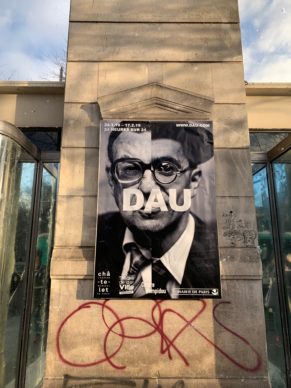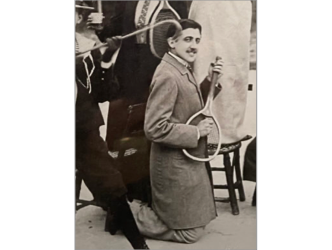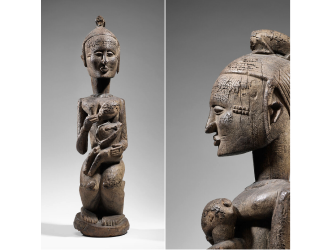
Oslofjord
On the banks of the Oslofjord in the all-new cultural district of Bjorvika, located in a former container port set amid the maritime landscape that was so beloved by the famous Norwegian native Edvard Munch (1863-1944), there’s a 13-storey building with a rather bulky design by the Spanish architect firm Estudio Herreros.
Genius of modernity
Inside there’s a nice surprise, because it is home to the world’s largest collection of paintings, drawings, etchings and memorabilia from this genius of modernity who is lesser known this side of Europe. Just before he died he bequeathed his entire collection to the city of Oslo.
28 000 items
This amounted to 28,000 items to be kept in a museum in his name from 1963 onwards.
National museum of Norway
But wealthy Norway is revamping its museum park. Ahead of the National Museum’s reopening slated for June 2022 and due to occupy a new building, October 2021 saw the inauguration of the Munch museum in its massive new setting, five time the size of the old site.

Norway Mona Lisa
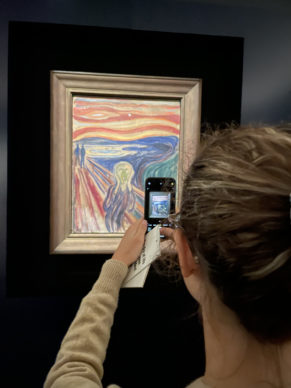
Firstly let’s clear up the subject of Munch’s most famous painting, “The Scream”, the ultimate symbol of anguish, featuring a ghostly face surrounded by whirlwinds of colour. Now bearing the status of Norway’s Mona Lisa, it conceals, through its universal impact, the rest of the master’s genius. Munch repeated himself extensively and “The Scream” exists in multiple versions. For reasons to do with conservation and in order to always have a “Scream” available for visitors to the new institution, a pastel, an oil painting and an etching of the subject are displayed in turn, for one hour each, in a dedicated room.
Tracey Emin
One floor is set aside for an exhibition of contemporary art which, until 2 January, is establishing a dialogue between the British contemporary art star Tracey Emin (born in 1963) and the Norwegian artist. What unites them? This is indicated poetically through its title: “the loneliness of the soul”. We can say they have both used their trauma as raw material for their oeuvre. Sexuality is also never far away in the work of both.
Screaming at the top of her lungs
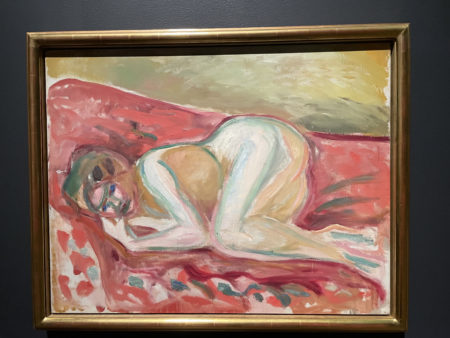
We might reproach the former Young British Artist for pushing the comparison to the point of screaming at the top of her lungs in a video…
Death of Marat
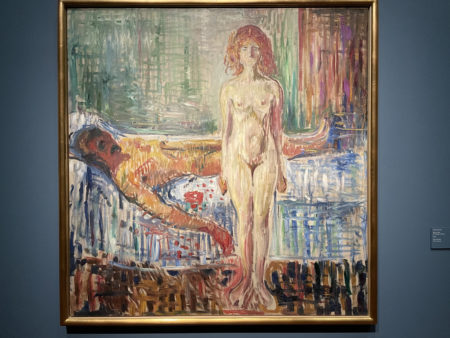
The highlight of the exhibition is a painting by Munch made in 1907 called “The Death of Marat”. Here the revolutionary is depicted not in his bathtub, as in the famous painting by David, but rather in his bed next to a woman who stands facing the viewer, looking vengeful. The colour work is remarkable. A proliferation of brushstrokes in green, blue and brown.

Extraordinary colourist
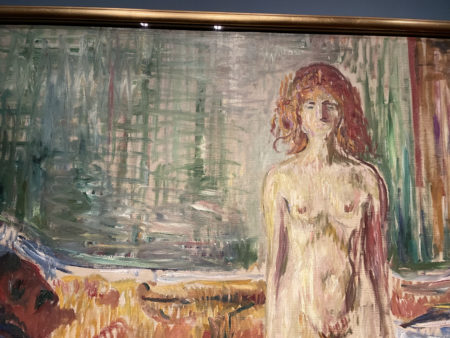
More generally, the impression we retain from the visit to the Munch museum – permanent collection included – is that the painter at the turn of the century became an extraordinary colourist. See his “Weeping Nude” from 1913-14 in which a woman in a state of undress holds her face in her hands. The upper part of the composition is purple. She’s sitting on crimson cushions. The texture is treated with translucide whirls and drips as well.
Inverted exclamation mark
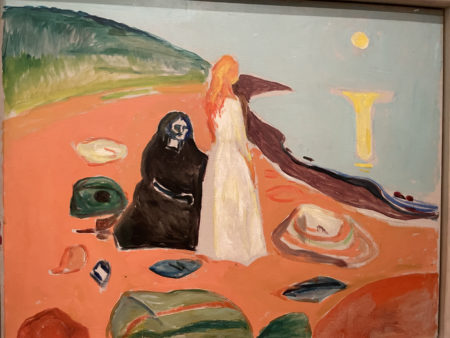
His sea scenes are often animated by aloof figures, but above all by a reflection of the moon in the water which always assumes the same motif: a kind of inverted exclamation mark. We can also see this as a sort of Jesus with arms outstretched… And many other things besides…

Securing his legacy
Because the Norwegian’s work, with its psychological expressions, opens up a gulf of interpretations that he himself wanted to spark. “Munch was very concerned with the idea of the importance of securing his genius and his legacy. He wanted the viewer to wonder about his identity,” explains curator Lars Toft-Eriksen. He travelled through Europe many times and staged exhibitions there which made an impact and inspired the members of the avant-garde he met”.
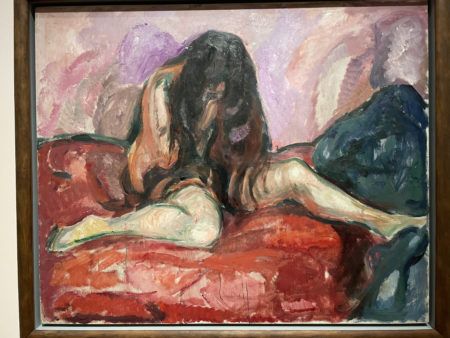
Sens of freedom
We find Delaunay, Matisse, Cézanne and Degas in the flood of Munch’s works on display. We could lament the fact that the permanent collections have a layout that’s slightly too tight. Nonetheless. We emerge transported by these paintings where colours dance across the canvas, animated by an exceptional vision and sense of freedom.
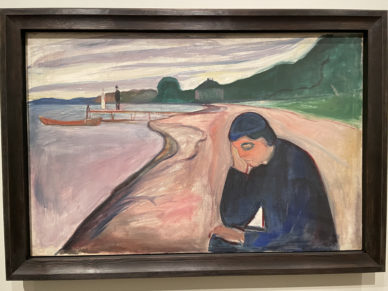
Support independent news on art.
Your contribution : Make a monthly commitment to support JB Reports or a one off contribution as and when you feel like it. Choose the option that suits you best.
Need to cancel a recurring donation? Please go here.
The donation is considered to be a subscription for a fee set by the donor and for a duration also set by the donor.

